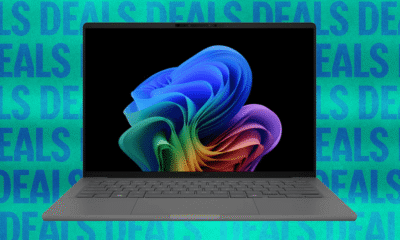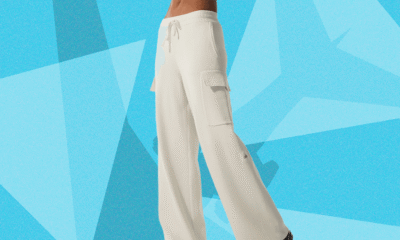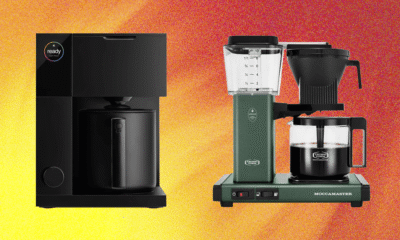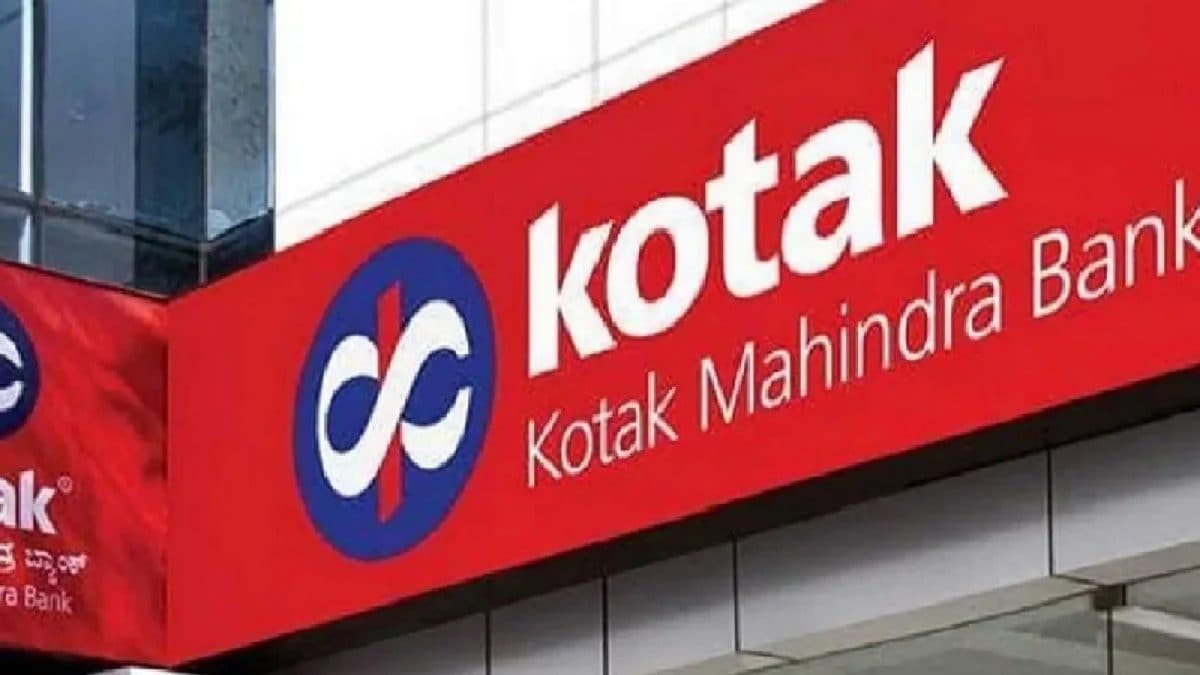Tech
Amazon Prime Big Deal Days Is Next Week, but We Already Found 40 Early Deals
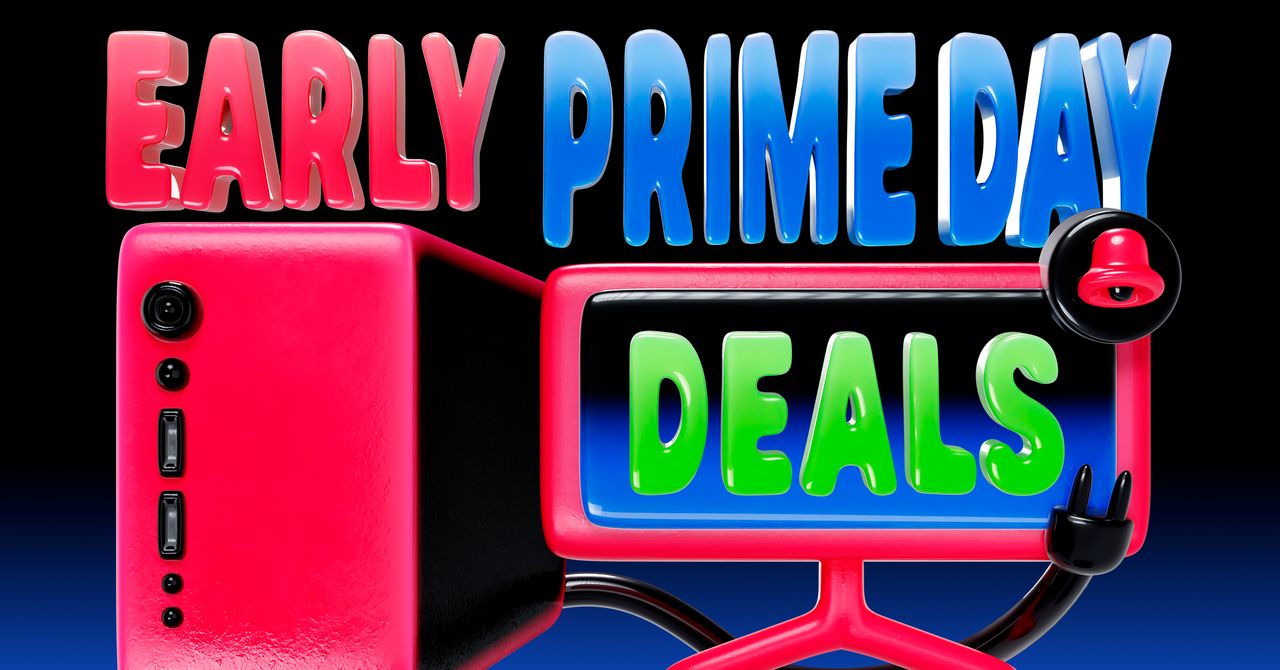
It’s that time of year again, and Prime Day deals are back. The Amazon Prime Big Deal Days event—also known as Amazon Prime Day 2—is officially arriving on October 7 and 8, but early deals have already started flowing. The WIRED Reviews team has hundreds of years of collective experience covering shopping holidays such as this. What sets us apart is that we only write about actual deals on the gear and gadgets that we’ve hand-tested. We’re getting ready to cover the whole sale with a variety of stories and even a liveblog (and, hopefully, lots of caffeine.) Below, you’ll find the best deals we’ve managed to find so far. Come back for additional coverage when the event begins.
Get prepared with our guide on How to Shop Prime Day Like A Pro. We also have advice on avoiding scams on Amazon and making sure you’re getting all of your Amazon Prime perks.
Updated October 4, 2025: We’ve added 10 new deals on the Ninja CREAMi and Luxe Cafe Premier, multiple coffee devices and accessory ovens, and a Zojirushi rice cooker. We also swapped out dead deals and checked for accuracy throughout.
Featured in this article
Apple iPad (2025, A16) for $319 ($30 off)
This is the best iPad on the market. The 2025 Apple iPad (A16) is cute and comes in a few different colors in your choice of 128-, 256-, or 512-gigabyte storage. It has a modern design, USB-C charging, Touch ID, and two 12-MP cameras. It’s powerful enough for most people, and it doesn’t have support for Apple Intelligence (which may be a blessing or a curse). If you primarily use your tablet to watch videos, play mobile games, or do light work, it’ll be just fine (and you won’t overpay for features you aren’t using). One thing to note is that it only supports the first-generation or USB-C Apple Pencil. Check our guide to the Best iPad Accessories for additional picks.
Nothing Ear (a) for $89 ($20 off)
The Nothing Ear (a) top our list of the best wireless earbuds. They look super cool, with a stylish semi-clear design, on-board touch controls, and a sleek charging case. They pack excellent sound and good noise cancellation, and they’re downright easy to use. The battery lasts about five and a half hours if you’ve got active noise cancellation on. They also pair easily with both Android and iOS devices. This deal comes within $10 of the best discount we’ve tracked.
Ugreen 145W Power Bank for $66 ($34 off)
Ugreen’s charger is best power bank you can buy for tablets—surprisingly compact for a 145-watt charger with a 25,000-mAh battery. What makes this special is you can actually draw the full wattage while charging, which means this is the power bank for you if you want to charge fast.Wired reviewer Simon Hill notes this is the best lineup you can buy to keep your tablet charged at all times.
Anker MagGo Power Bank (10K) for $70 ($20 off)
This is the best Qi2 power bank out of the many we’ve tried so far, and we’ve not yet seen it sell for less. It has a built-in kickstand, a two-way USB-C port, and a built-in LED display. You can attach MagSafe iPhones or Qi2 phones in landscape or portrait orientation. It’s not the beefiest power bank in the world, offering about one and a half charges for newer phones, but it’ll definitely come in handy if you just need a quick top-off while on the go—especially since you won’t need to bring your own cable.
Apple MacBook Air (M4, 2025) for $799 ($200 off)
It’s hard to do much better than the MacBook Air (M4, 2025). The best laptop has beefy performance, terrific battery life, and is super quiet thanks to its fanless design. It also has support for two 4K external monitors, and the built-in M4 chip allows for on-device AI processing and support for Apple Intelligence. The webcam boasts 12 megapixels, which is an upgrade compared to previous models, too. It comes in your choice of four different colors and three storage configurations. Check our MacBook buying guide for additional recommendations.
Ninja CREAMi Bundle for $200 ($55 off)
The Ninja CREAMi delivers on a wild promise. It’s a home device that can make ice cream out of seemingly anything. WIRED Reviewer Julia Forbes wrote that she and her husband like to take turns dazzling each other with far-flung ice cream recipes, and recommends it as a gift for newlyweds. Anyway, the bundle with extra ice cream tubs is more than 20 percent off in the leadup to Prime Day, less than the CREAMi alone generally costs. Prefer soft serve? The Ninja Swirl by CREAMi ($350) is also on sale for $45 off.
Arlo Pro 5S Security Camera for $100 ($80 off)
This is a great deal on our favorite outdoor security camera, and you can get in on it right before porch pirate season. The Arlo Pro 5 has clear footage, fast live-feed load times, and smart notifications. Recording at up to 2K resolution with HDR, it won’t struggle in low light thanks to night vision, and there’s also a color mode. Two-way audio is clear, and there’s a built-in siren too. You do need an Arlo Secure subscription to make the most of this camera, but the deal is solid. The multipacks are discounted, too.
Amazon Kindle Scribe (2024) for $300 ($100 off)
Full disclosure: A new Kindle Scribe is coming, but we still think this is worth buying. The Kindle Scribe is our favorite e-reader for taking notes. It works well as a digital notebook and as a way to read your favorite books. With a generous 10-inch display and a Premium Pen (with a soft-tipped eraser on the end) included, you can use it to plan, journal, or annotate. There are some AI software features like note summarization, too. We do wish it was waterproof, or that it had some color features like the new model will, but if you’re in the market for something like it, it’s worth considering. There’s a chance it will get slightly cheaper when Prime Day actually arrives, but it likely won’t be by much—especially considering this is a match of the lowest price we’ve tracked.
Ultrahuman Ring Air for $300 ($50 off)
This smart ring is our favorite without a subscription. Importantly, due to a ruling by the FTC, these rings will no longer be available for purchase in the US after October 21 (though Ultrahuman says existing rings will still be supported). If you have been eyeing one, this deal is a match of the best we have tracked so far. The Ring Air can track your heart rate, blood oxygen, physical activity, and sleep, and it’ll offer insights about changes in your heart rate variability or skin temperature. There are some additional convenient features like a smart alarm that’ll wake you up during a lighter part of your sleep cycle, too.
Baratza Encore Coffee Grinder for $120 ($30 off)
WIRED has devoted a lot of time to thinking about and analyzing the best coffee grinders—because frankly, the quality of the grind is every bit as important to determining how your coffee tastes as the machine you use to brew. What we keep discovering is that Baratza’s entry-level Encore grinder series performs shockingly well for its price range. At a $120 Prime Day deal, it’s punching far, far above its weight. Note this grinder is for drip, French Press and AeroPress. For espresso, you’ll want the Baratza Encore ESP ($200).
Power up with unlimited access to WIRED. Get best-in-class reporting and exclusive subscriber content that’s too important to ignore. Subscribe Today.
Tech
Four Indicted In Alleged Conspiracy to Smuggle Supercomputers and Nvidia Chips to China
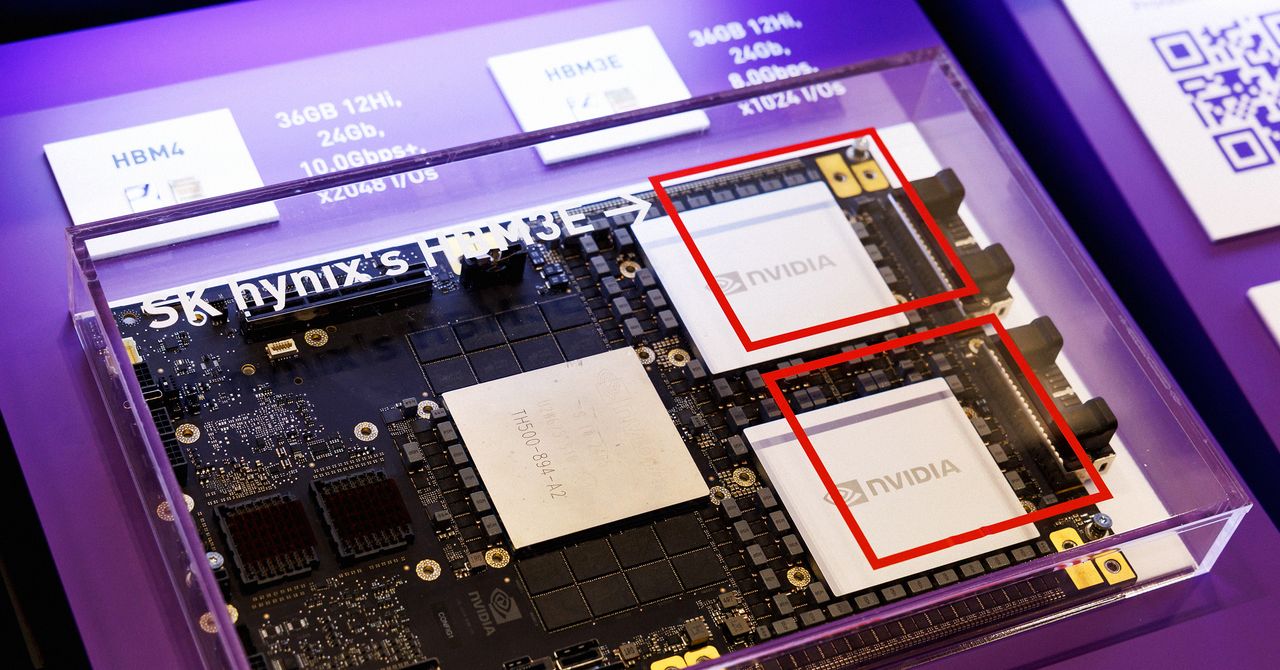
Stern said text messages obtained by authorities show Li boasting about how his father “had engaged in similar business on behalf of the Chinese Communist Party.” Stern alleged the messages also show Li, who works at a hardware distribution company, was aware through news articles he shared that the Nvidia chips were subject to export controls. “He explained that his father had ways to import them,” Stern said, again citing Li’s text messages.
Stern told the court that Li “did admit to various facts” during questioning by federal agents on Wednesday that implicated him.
The defendants face various charges related to violating export control laws and up to 20 years in prison.
Ho and Raymond did not immediately respond to requests for comment sent to LinkedIn accounts purportedly belonging to them. Public defenders for Chen and Li declined to comment.
Nvidia spokesperson John Rizzo said in a statement that “even small sales of older generation products on the secondary market are subject to strict scrutiny and review” and that “trying to cobble together datacenters from smuggled products is a nonstarter, both technically and economically.”
Corvex, an AI cloud computing business Raymond consulted for, said in a statement that it had rescinded a job offer for him to join the company full-time and that it had no connection to the alleged wrongdoing.
Earlier this year, the US Department of Commerce was reportedly considering restricting the sale of advanced chips to Malaysia and Thailand in an effort to curb chip smuggling, but the regulations have yet to be finalized. The Commerce Department did not immediately respond to a request for comment.
Magistrate Judge Westmore ordered Li to hire an attorney because she said he had significant equity in a San Leandro, California, home and other assets, making him ineligible for a public defender. The magistrate also set a hearing for Tuesday to decide whether Li is a significant flight risk and should continue to be detained. He holds a US green card and Hong Kong citizenship.
Li, wearing glasses, flipflops, and a black windbreaker, nodded in response to some of Westmore’s statements but did not speak. Kaitlyn Fryzek, his temporary public defender, said Li is planning to marry a US citizen. “His incentive is to stay and get married to his fiancée,” Fryzek said.
Tech
Got a Pixel 10? Google’s Android Phone Can Now Share Files With Apple’s AirDrop
The caveat is that the iPhone user will need to switch AirDrop into the “Everyone for 10 Minutes” mode instead of “Contacts Only” mode. Google says this isn’t some kind of workaround solution. It’s a direct, peer-to-peer connection; your data isn’t routed through a server, shared content isn’t logged, and no extra data is shared. Naturally, iPhone owners will be able to send data back to Pixel 10 phones as well.
Google has not worked with Apple on this cross-compatibility, as the company says it “welcomes the opportunity” to work with Apple so that this sharing function can work in the Contacts Only mode. “We accomplished this through our own implementation,” a Google spokesperson tells WIRED. “Our goal is to provide an easy and secure file-sharing experience for our users, regardless of who they are communicating with.”
In a security blog post, Google says the underlying strategy for what makes this new synergy between Quick Share and AirDrop work is the memory-safe Rust programming language. “These overlapping protections on both platforms work in concert with the secure connection to provide comprehensive safety for your data when you share or receive,” writes Dave Kleidermacher, vice president of Google’s platforms security and privacy.
Google tapped NetSPI, a third-party and independent penetration testing firm, to validate the security of the new sharing feature. The findings? The interoperability is “notably stronger” than other industry implementations. That’s pretty important, considering what happened the last time someone tried to improve cross-compatibility between iOS and Android without Apple: The startup Beeper tried to make texts from Android phones show up as blue bubbles on iPhones and caused all kinds of drama.
The number of people who can actually use this feature is limited because it’s only available on Google’s latest Pixel 10 smartphones, which just launched this past August. However, Google says it’s looking to expand the feature to more Android devices in the future.
This new feature in Quick Share is rolling out starting today to the Pixel 10 series, which includes the Google Pixel 10, Pixel 10 Pro, Pixel 10 Pro XL, and Pixel 10 Pro Fold. As it’s rolling out, you may not see it immediately on your device. To use it, all you need to do is select something to share, whether it’s a file, contact, or photo, choose Quick Share in the sharing menu, and make sure the iPhone owner has their AirDrop set to “Everyone for 10 Minutes Only.” The iPhone will be able to see the Pixel 10 device and can receive or send data.
Tech
Russian money launderers bought a bank to disguise ransomware profit | Computer Weekly
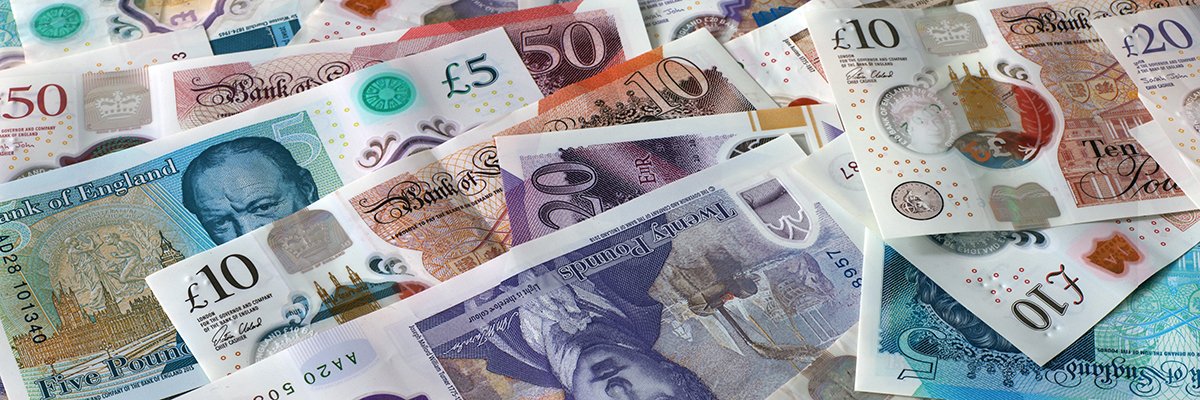
A billion-dollar money laundering network active in the UK bought a bank in the Central Asian state of Kyrgyzstan to facilitate the washing of profits from cyber crime and other criminal activity, and convert it into cryptocurrency that was used to evade sanctions on Russia in support of the Putin regime’s war on Ukraine, according to the National Crime Agency (NCA).
So-called cash-to-crypto swaps are a core part of the global criminal ecosystem. In 2024, the NCA and its European and North American partners came down hard on two full-service Russian-run money laundering networks, TGR and Smart, which washed money on behalf of multiple ransomware crews, including the likes of Evil Corp, Conti and Ryuk, in an ongoing series of actions dubbed Operation Destabilise.
In the past 12 months, Operation Destabilise has seen 45 suspected money launderers arrested and £5.1m in cash seized. Since its inception, 128 arrests and over £25m have been seized in cash and crypto assets in the UK, plus millions more abroad.
“Today, we can reveal the sheer scale at which these networks operate and draw a line between crimes in our communities, sophisticated organised criminals and state-sponsored activity,” said NCA deputy director for economic crime, Sal Melki.
“The networks disrupted through Destabilise operate at all levels of international money laundering, from collecting the street cash from drug deals, through to purchasing banks and enabling global sanctions breaches.”
The connection into Kyrgyzstan, a former Soviet state sandwiched between Kazakhstan and China, was uncovered in August, when a company linked to TGR ringleader George Rossi, Altair Holding SA, was sanctioned in the UK as part of a crackdown on known Russian efforts to circumvent Western sanctions by exploiting the Kyrgyz financial system.
It can now be revealed that Altair bought a 75% stake in Kyrgyzstan-based Keremet Bank on 25 December 2024. The NCA has subsequently found that Keremet facilitated extensive cross-border payments on behalf of state-owned Promsvyazbank.
Promsvyazbank, which was nationalised by the Russian government in 2018, was also sanctioned by the US and UK following the invasion of Ukraine, and has been accused of links to Russian attempts to rig elections in Moldova through the populist, pro-Russian politician and oligarch Ilon Shor, who also orchestrated the theft of over $1bn from the country’s banking system in 2014.
Shor’s A7 company at one time collaborated with Promsvyazbank on the launch of a rouble-backed cryptocurrency stablecoin, A7A5, and networks linked to the firm have likely been designed to allow cross-border payments to circumvent sanctions in support of Russia’s military-industrial complex, said the NCA.
Beyond ransomware
It was cyber crime, specifically the network’s links to Evil Corp and bitcoin payments made by its victims, that first led the NCA and its partners to the activity, when they spotted the profits of ransomware attacks going into an individual crypto exchange account that was linked to UK-based money launderers it had already identified.
However, the activities of TGR and Smart extend into other areas of organised criminality across the UK, including the drugs and firearms trade and immigration fraud. The NCA would not, however, be drawn at this stage on any involvement in its other investigations into cyber criminal activity or any of the major cyber attacks that have unfolded this year in the UK.
Besides funnelling these funds into propping up Russia’s war on Ukraine – the agency described a “clear thread” between small-time Friday night cocaine deals in UK bars and clubs to Russian missile strikes on Ukrainian civilians – the network also made money available to wealthy Russians living in the West as a concierge service, and even incorporated some of it back into the UK banking system through traditionally cash-rich businesses, such as small building firms.
The identified and arrested individuals linked to money laundered through the network include two Russian nationals who bought cars and vans in the UK, shipped them to Ukraine and sold them to the Ukrainian government, which was unaware it was funding its enemy’s war effort.
Operation Destabilise also ensnared a number of Brits, such as Scottish footballer James Keatings, who investigators witnessed transferring boxes of cash from a van during a June 2024 handover of almost £400,000.
Keatings, a former member of Celtic’s youth development programme who went on to play for both Heart of Midlothian and Hibernian during his career, was jailed for 13 months earlier this year after he admitted possessing and transferring criminal property at Falkirk Sheriff Court.
Like Keatings, many of the network’s UK operatives were mules tasked by the network’s “managers” with driving all over the country to pick up cash from lower-level criminals.
They have been targeted by NCA poster campaigns in locations they frequent, often in motorway service station toilets. The NCA said its objective had been to “make these courier networks sweat”, and it has seen some success in scaring them off.
“Millions of Britons will have seen these messages at service stations, but rest assured, they were not for you,” said Melki. “To the launderers who will have seen them, your choice is simple: either stop this line of work, or prepare to come face to face with one of our officers and the reality of your choices. Easy money leads to hard time.”
-

 Tech5 days ago
Tech5 days agoNew carbon capture method uses water and pressure to remove CO₂ from emissions at half current costs
-

 Politics7 days ago
Politics7 days agoBritish-Pakistani honoured for transforming UK halal meat industry
-

 Business6 days ago
Business6 days agoThese 9 Common Money Mistakes Are Eating Your Income
-

 Sports5 days ago
Sports5 days agoTexas A&M officer scolds South Carolina wide receiver after touchdown; department speaks out
-

 Sports6 days ago
Sports6 days agoApple scrapping MLS Season Pass service in ’26
-

 Business6 days ago
Business6 days agoWhat’s behind Rachel Reeves’s hokey cokey on income tax rises?
-

 Fashion7 days ago
Fashion7 days agoAfter London, Leeds and Newcastle, next stop Glasgow for busy Omnes
-

 Tech7 days ago
Tech7 days ago$25 Off Exclusive Blue Apron Coupon for November 2025





-SOURCE-Parker-Hall.jpg)

.jpg)
-Reviewer-Photo-SOURCE-Brenda-Stolyar.jpg)








